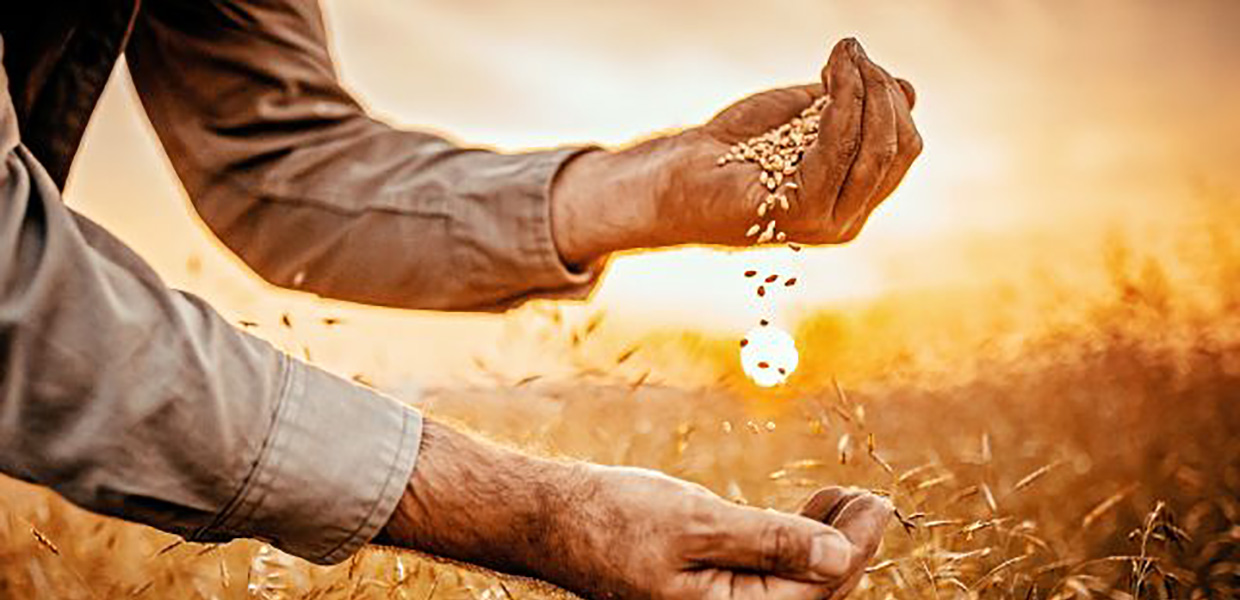The current global food system is not equipped to cope with a rapidly growing global population, climate challenges and the rise of both hunger and obesity and changing customer needs.
The FAO (Food & Agricultural Organization of the United Nations) states that to meet demand (9 billion people by 2050), agriculture will need to produce almost 50 percent more food, feed and biofuel than it did in 2012.
According the FAO, the consensus view is that the current systems are likely capable of producing enough food, but to do so in an inclusive and sustainable manner will require major transformation. DLL, a subsidiary of Rabobank and a leading provider of financing solutions to the food & agriculture sector, has identified three trends that the industry will have to act on in order to continue to create value in a sustainable manner.
Changing customer needs and preferences
Health and wellness is a trend that has been driving change in food and beverages worldwide for several years now. Increasingly, people have been focused on maintaining good health, including the consumption of healthier, more nutritious foods and changes in their diets. We believe that this trend has accelerated amid the pandemic and will remain a norm thereafter.
It’s also been estimated that the demand for global protein will increase by 80% over today’s levels, as a result of a fast-growing population, urbanization and rising incomes. However, while the global demand for food overall is expected to increase by 70% by 2050, the protein production of today will be unable to meet future demand. Alternatives to meat and seafood appear to be yet another sign of changing consumer preferences and cultured and plant meat start-ups have raised over US$125 million since 2015. Further, investment in these techniques grew by 85% between 2018 and 2019. In order to compete, traditional food manufacturers are expanding their protein product offerings by taking over smaller companies that have created their own niche markets. For example, Nestle acquired Sweet Earth to expand its portfolio in plant-based protein. Although we are moving into a more meatless future, there is still a long way to go. Plant-based meat still has less than 1% of the market share of the US meat industry and companies are struggling with scaling up and price parity versus that of traditional meat.
COVID-19 has also boosted the need for transparency in sourcing, production, and the entire supply chain. Blockchain technology is a significant driver. It is expected that by 2022, blockchain will be incorporated into QR codes on food packaging, enabling consumers to track certain aspects of their product along the supply chain – including manufacturing, distribution, retailers, and quality control information.
The potential of food technology innovation
Innovative technologies continue to reshape our world and bring opportunities and disruptions across every industry, including the food industry. Forbes concluded that technology has been changing how we produce and find our food via online applications, robotics, data and processing techniques.
Robotics
The pandemic has also accelerated the transition to automation and robotics, which benefits hygiene, safety, and cost control. Robotics Tomorrow recently stated, “The aspect of minimizing worker presence across the production process can help minimize potential contamination while also helping companies reduce costs, in terms of safety and other measures for personnel.” Within the food industry robotics are mainly implemented for packaging, production, palletizing and picking and placing the product in manufacturing facilities.
Whereas robotics have not always been feasible from a budget perspective, the costs of this technology are rapidly decreasing. For example, ARK Investment Management says that industrial robot costs are expected to drop by 65% by 2025, resulting in a more affordable investment for manufacturers.
3D food printing
Automation also positively contributes to sustainability. For example, 3D food printing allows for high quality and consistency while mitigating food waste – a significant global problem. According to FAO, food waste globally amounts to one-third of the total food produced for human consumption or about 1.6 billion tons a year. 3D printing, apart from being used for prototyping, manufacturing, fashion, architecture, medicine, and many other applications, can also be utilized for manufacturing food – an emerging opportunity for the segment.
Big data
Finally, big data has enormous potential for improving food consistency and quality. Ultimately, data should be collected at all stages of the food supply chain via Internet of Things (IoT) devices and carefully stored and accessed utilizing blockchain applications.
Automation remains crucial in achieving the necessary output to feed the growing world population, without compromising public health, environmental impact, or consumer demands. An integral component: big data is the fuel by which quality information will be shared and by which better decisions will be taken.
Rethinking food packaging
The growing world population also puts enormous pressure on natural resources and our linear ‘take- make,-waste’ approaches will not be sustainable for future generations. According to National Geographic, approximately 2/3 of the raw materials we use end up as waste, mainly because of our linear production and consumption processes. From both a consumer and manufacturer perspective, there is a growing interest in sustainability and taking responsibility. Increasingly consumers want to ‘do good,’ and manufacturers want to lead with purpose with sustainability as a driver of competitive advantage.
An Accenture survey of 6,000 consumers in 11 countries across North America, Europe and Asia concluded that more than half of consumers said they would pay more for sustainable products designed to be reused or recycled. Further, nearly three-quarters (72%) of the respondents said that they are currently buying more environmentally friendly products than they did five years ago and 81% said they expect to buy more of these products over the next five years.
Food industry stakeholder beliefs, market demand and environmental pressure continue to steer the packaging industry towards more sustainable packaging, less plastic, more recycling and less food waste. Annually, 300 million tons of plastic are produced, and half of that is only used one time. Plastic used for packaging represents about 40% of the total and most of it ends up in a landfill. As such, packaging materials and methods should be reconsidered and new recycling techniques need to be developed. In this regard, the food packaging industry is at the forefront of a significant transformation – an essential journey to better anticipate consumer and environmental opportunities, while leveraging automation, robotics and big data to meet future food demand in a sustainable way.
If you have any questions about how financing can support your food business, or needs of your customers, please contact us, or check out our website for more information.


